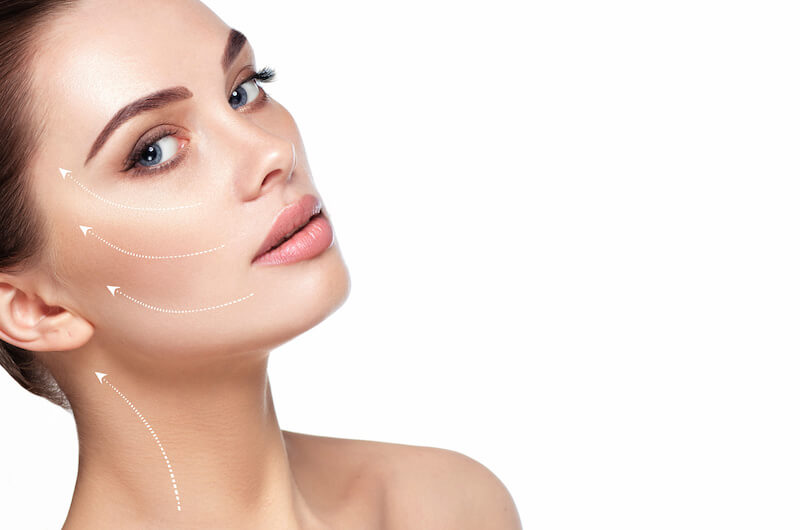
- Lipotransfer
- Exosomes ASCE+
- Tear Trough
- Epilation
- Platelet-Rich Fibrin
- Photorejuvenation
- Carboxytherapy
- Stem cells
- Nose correction
- Hyaluronic Acid
- CO2 Fractional Laser
- Lipotransfer
- Body Contouring
- Mesotherapy
- Vampire Facelift
- Plasma
- Eyelid Lift
- Lip Augmentation
- Skin discoloration
- Stretch marks
- Sclerotherapy
- Botulinum Toxin
- Volumetry
- Vascular Lesions
Lipotransfer in Wroclaw, Poland- Nowa Estetyka Medical Center
Wrinkle Filling and Skin Regeneration with Your Own Fat Tissue
Lipotransfer, also known as fat grafting, is a treatment method used in aesthetic medicine to restore soft tissue volume and contour specific areas of the body. Your own fat tissue serves as a 100% biocompatible filler, minimizing the risk of allergic reactions after the procedure. In addition to restoring lost volume and tissue defects, the procedure also results in cell regeneration and revitalization. Fat grafting is a minimally invasive treatment that offers maximum benefits and lasting results while maintaining the highest level of safety.
What sets lipofilling apart from other volumetric methods?
The advantage of lipofilling over other filler-based procedures (hyaluronic acid, synthetic fillers) lies in its minimal impact on the tissue at the injection site. In cases of repeated hyaluronic acid treatments (which do not provide permanent results, hence the possibility of repetition), administering the same volumes of filler may not yield equally satisfying outcomes. Lipofilling provides long-lasting results—while HA-based fillers last anywhere from a few to several months, fat grafting offers more permanent effects. Additionally, fat transfer minimizes the risk of allergies since the body tolerates its own cells better than fillers, which, although biocompatible, are still foreign bodies and thus carry a slight risk of allergic reactions.
Wrinkle Filling with Your Own Fat – Procedure Overview
The extraction of fat cells requires local anesthesia. The material is harvested manually using a thin cannula. No mechanical devices used for liposuction (fat removal) are involved in the extraction process. The fat is collected from areas with the most abundant fat tissue—typically the buttocks, thighs, abdomen, or hips.
The extracted fat is then purified to filter out blood elements, damaged cells, free lipids, and anesthetic substances. The prepared fat consists of about 20% stem cells, which activate natural repair processes at the injection site, resulting in the treatment’s revitalizing effect. Stem cells stimulate fibroblasts to synthesize new collagen and elastin, making the skin firmer, more elastic, and reducing the appearance of wrinkles.
The processed fat is injected into the recipient area manually using a fine cannula. Very thin needles are used, so no scarring occurs at the injection site. During a single procedure, fat can be transferred to various parts of the face and body. The entire treatment usually takes around 60 minutes. Patients can leave the clinic immediately after the procedure.
Is Fat Transfer Painful?
Lipofilling is performed under local anesthesia. In fat filling treatments for areas like the face, décolleté, and hands—where relatively small amounts of fat are used—general anesthesia is not necessary.
Lipotransfer – Indications
The most common application of lipofilling is facial contouring procedures, such as filling sunken cheeks and temples.
Indications for lipotransfer in the face, neck, and back of the hands include:
- filling shallow and deep wrinkles
- skin revitalization of the face and décolleté
- hand rejuvenation
- filling the tear trough (dark circles and hollows under the eyes)
- filling nasolabial folds
- lip enhancement, filling smoker’s lines
- volumetric correction: improving facial contour, lifting sagging cheeks (so-called jowls), filling temples
- correcting facial asymmetry
- restoring volume lost due to trauma, disease, or natural aging processes
- filling atrophic (sunken) scars, such as those caused by acne or burns, regardless of their location
- tissue fibrosis
- restoring volume in intimate areas
- vaginal revitalization
- reconstruction of scars after an episiotomy
- treating vaginal and vulvar atrophy
- filling scars caused by C-section incisions
Lipotransfer – Results
- reduction of signs of skin aging
- restoration of lost volume
- rejuvenation of cells near the injection site
- improved blood circulation
- increased cellular metabolism
- reduction of tissue fibrosis
- skin becomes more elastic and firm
Initial results can be seen once the swelling and bruising subside. The final results of the procedure are usually visible within 2-3 months. The fat cells that establish blood supply are permanently integrated into the new area, leading to lasting therapeutic effects. It’s important to note that some of the transferred fat will be absorbed, meaning the final volume may not equal the amount initially injected. This depends on the method used, patient adherence to post-treatment instructions, and individual body characteristics. To maintain the desired effect, lipofilling can be repeated.
Post-Procedure Care and Treatment Area Management
Detailed post-procedure recommendations are provided by the specialist performing the procedure. Post-care depends on the size of the treatment area and the amount of fat transferred. It’s essential to limit exposure to high temperatures, so tanning (including sunbathing and tanning beds), swimming pools, and saunas should be avoided after the procedure. As with any treatment that involves breaking the skin barrier, it’s crucial to maintain hygiene at the injection sites. Swelling and tenderness, which may last up to three days, can be alleviated with cold compresses.
Possible Side Effects
Common side effects include mild swelling and tenderness of the skin for up to three days post-treatment. Despite using very fine needles, bruising may persist for 2-3 days.
Contraindications for Lipotransfer
- Smoking
- Pregnancy and breastfeeding
- Lack of fat tissue at the donor site
- Uncontrolled hormonal disorders (diabetes, thyroid disease)
- Cancer
- Cardiovascular diseases
- Skin infections at the donor or injection site
- Blood-thinning medications and coagulation disorders
Required Test Results
Before qualifying for the procedure, the following test results must be provided:
- Blood clotting time
- Complete blood count (CBC)
- Fasting blood glucose
Blood-thinning medications (e.g., aspirin) should be discontinued at least seven days before the procedure.